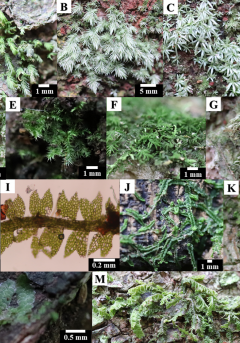The Nan Project, directed by Assist. Prof. Dr. Dia Shannon comprises 3 research initiatives:
-
From a Bare Mountain to a Regenerated Forest: compared landscape planting designs for forest restoration in Nan Province, sponsored by the National Science and Technology Development Agency (NSTDA), 2017 to 2020.
-
Forest Landscape Restoration and Community Well-being: supported by the Program Management Unit on Area Based Development (PMU A), 2020 to 2021.
-
Evaluating Changes and Ecosystem Services of Nan Restored Forests: funded by the National Science and Technology Development Agency (NSTDA), 2021 to 2022.
The research spans three districts of Nan Province—Pua, Phu Phiang and Wiang Sa—with three plots in each district. The project commenced with a survey of reference forest remnants, near the restoration sites, including i) the Nam Kaen - Nam Sa Watershed Forests (Phu Phiang District), supervised by the Royal Forest Department; ii) Mon Hin Kaew Community Forest (Pua District) and iii) Ban Muang Noeng Community Forest (Wiang Sa District). The survey involved documenting tree density, species diversity and phenology, as well as bird diversity, over three years. Such data were then compared with the same in restoration forests, established in the 3 districts.
Knowledge of the framework species method of forest ecosystem restoration was transferred to local communities and restoration plots of various sizes were planted with a range of indigenous framework tree species. Post-restoration activities include frequent weeding and fertilizer application, as well as the cutting of firebreaks in the dry season. Monitoring focused on survival and growth rates of each species, as well as the diversity of soil microbial communities. Ecosystem services, provided by the restored forests, including climate control, were evaluated, along with forest products used by local people. The effects of restoration on the quality of life of local people was also assessed. Currently, villagers who are project members continue to actively contribute to the care of the restored forest, to ensure its long-term health and growth.
In collaboration with:
Biodiversity
Biodiversity recovery is one of the main aims of forest restoration - but what to measure? Plants? Birds? Mammal? Learn simple monitoring techniques here.
21: The Effects of Climate Change on Tree Phenology for Forest Restoration in Northern Thailand
ABSTRACT: The current world climate is rapidly changing and affecting physical and biological environments. Some abiotic factors have an influence on tropical forest ecosystems. Each flowering...
22: The Impact of Climate Change on Tree Phenology for Forest Restoration in Northern Thailand
ABSTRACT: Climate change causes changes in abiotic factors such as temperature, rainfall, and relative humidity, which may result in forest trees adapting their growth patterns to the changed...
23: Seedling recruitment of native tree species in active restoration forest
Abstract: Since the 1970’s, concern has grown over the environmental impact of deforestation over large areas in the northern mountains of Thailand and conversion of forest to agriculture....
24: Effects of Root Air-Pruning on Framework Tree Species Seedlings Production for Forest Restoration in Northern and Southern Thailand
Abstract: Tree planting is a simple tool to bring back the forest area. Therefore, seedling production is one of the important steps in forest restoration. Root pruning can promote the root system...
25: A trait-based approach for selecting tree species for aerial seeding
ABSTRACT: We review recent ecological research on functional traits that can aid selection of tree species for restoration by aerial seeding. A major barrier in selecting species for restoration...
26: Basics of automated plant identification
ABSTRACT: Historically, image-based dichotomous plant identification keys precede text-based ones by nearly one hundred years. Having lain in conceptual torpor for over 300 years, the notion of...
27: Auto-monitoring wildlife recovery
ABSTRACT: Wildlife monitoring during forest restoration addresses such questions as: What species re-colonize or disappear from restored areas? How many individuals are present? What are the...
28: Diversity of Ground Flora in Restoration Area of The Siam Cement (Lampang) Co., Ltd Limestone Quarry
Ground flora communities in framework species method restoration area of Siam cement (Lampang) Co. Ltd. limestone quarries were studied. adding top soil with the value of 2.81, 2.50 and 1.99,...
29: Effects of Forest Restoration Age on Species Diversity of Epiphytic Bryophyte Community
ABSTRACT: Forest restoration is re-establishing forest in disturbed areas. This is resulting in differences of biodiversity between restoration and natural forest - including the diversity of...
30: Effects of weeds on survival and growth of planted seedlings of native forest tree species during forest restoration in northern Thailand
ABSTRACT: Herbaceous weeds often hinder forest restoration by reducing establishment of planted tree seedlings. The study, presented here, compared survival and health of tree seedlings in the...











